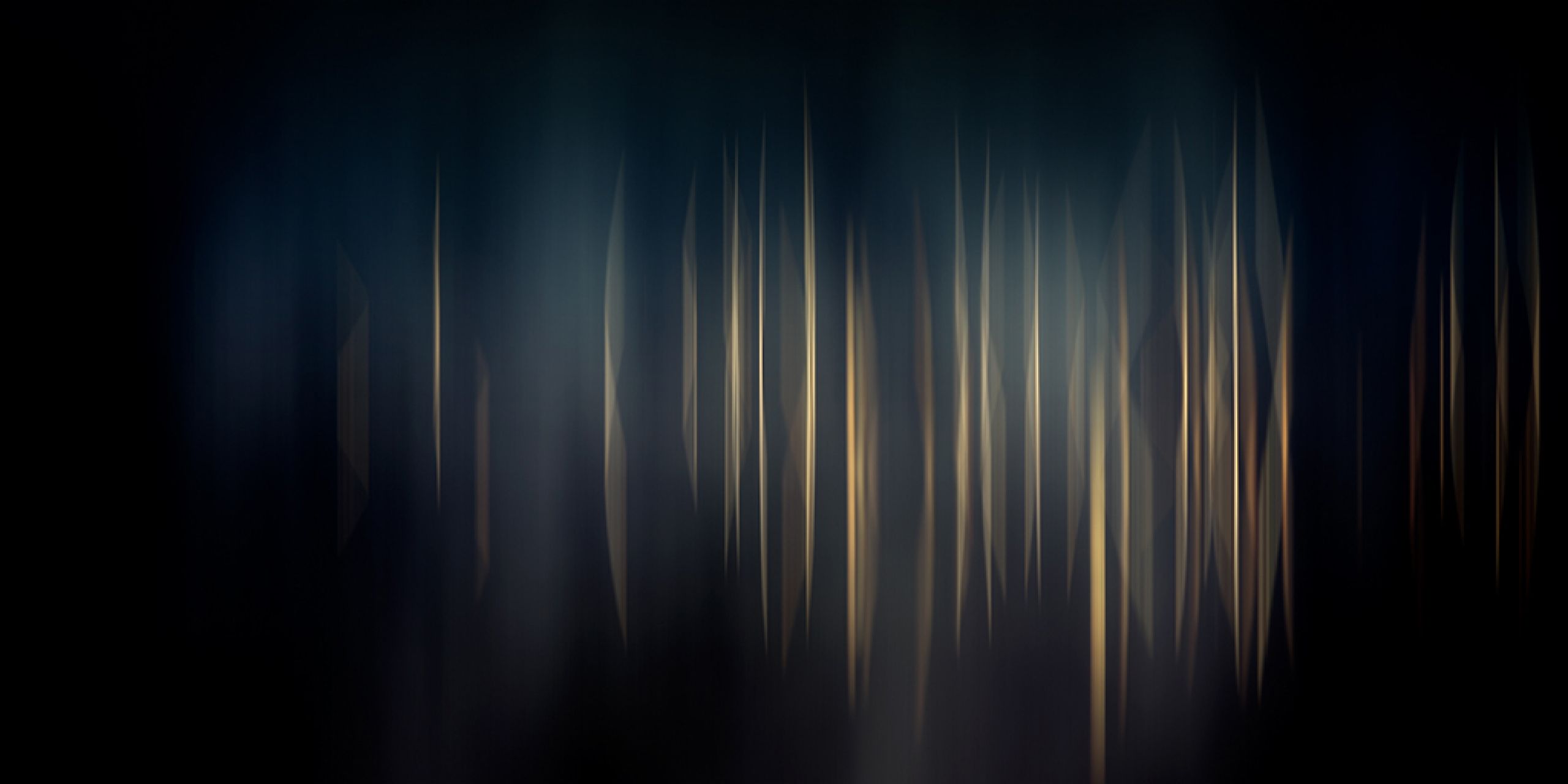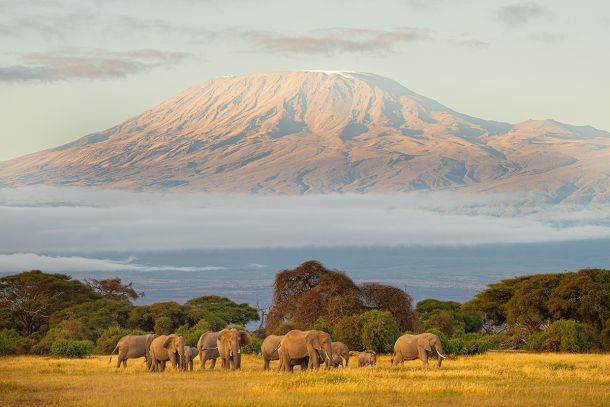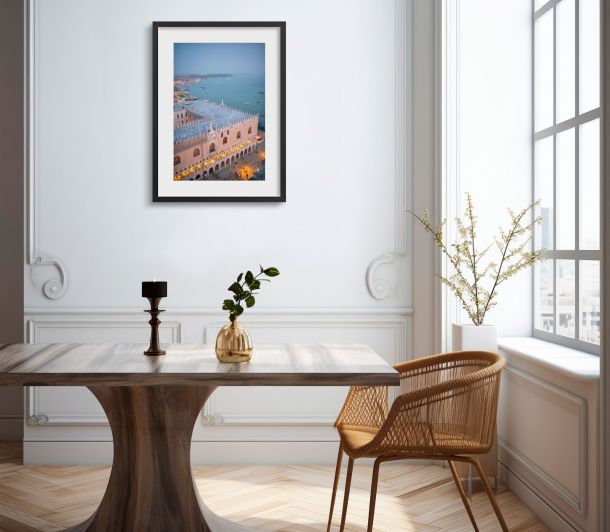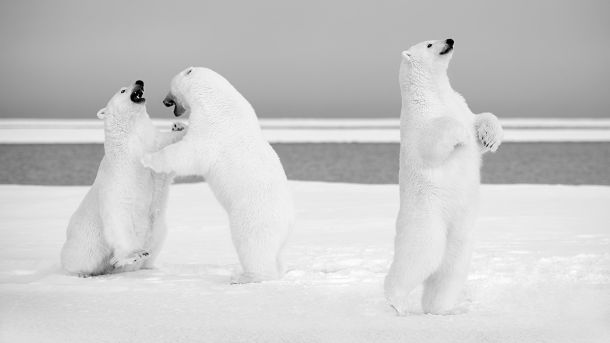Fine Art Photography: A Journey Through Iconic Works and Their History

Vibrato 3 – Photo : © Pierre Chancy
When faced with a piece of abstract art photography, many people feel disoriented, unsure how to interpret images that seem to defy any representation of reality.
Yet, abstract fine art photography transforms our perception of the everyday by revealing hidden beauty in the forms, textures, and light we encounter without truly noticing.
This unique form of artistic expression invites a more emotional and subjective reading, where abstract aesthetics stimulate our imagination and allow us to form a personal connection with the work—far beyond merely recognizing the photographed subject.
Table of Contents
- Definition and Principles of Abstract Art Photography
- Creative Techniques in Abstract Photography
- Notable Photographers and Key Works
- How to Interpret and Appreciate Abstract Photography
- Practicing Abstract Photography
- Abstract Photography in Contemporary Art
Definition and Principles of Abstract Art Photography
What Is Abstract Photography?
Abstract photography stands apart by creating images that move away from realistic representation, using photographic tools and techniques to express the unexpected through shapes, colors, and textures.
This art form finds its roots in early 20th-century artistic movements, notably Cubism and Abstract Expressionism, establishing an ongoing dialogue between photography and abstract painting that continues to evolve today.
Core Principles of Photographic Abstraction
Photographic abstraction transforms everyday elements into captivating visual compositions where graphic elements take precedence over the subject itself.
- Shapes: They create unique compositions that catch the viewer’s eye.
- Colors: They can evoke powerful emotions and generate a specific atmosphere.
- Texture: It reveals the complex beauty of everyday objects, often overlooked.
- Light: It turns an ordinary scene into a compelling visual experience.
Light is the ultimate transformative element in abstract photographic art, creating striking contrasts that highlight subtle forms and patterns, challenging our immediate perception of the subject.
How It Differs from Figurative Photography
Abstract photography breaks away from figurative tradition by abandoning any direct reference to the real world, favoring emotional and conceptual expression through pure visual elements.
| Characteristic | Abstract Photography | Figurative Photography |
|---|---|---|
| Main Subject | Shapes, colors, textures, light | Recognizable representation of reality |
| Purpose | To evoke emotions, explore concepts | To document, tell a story, depict faithfully |
| Interpretation | Subjective, open to imagination | More direct, based on recognition |
| Representation | Non-realistic, often unrecognizable | Realistic, identifiable |
In abstract photography, personal interpretation becomes essential, with each viewer becoming a co-creator of meaning, as the image offers space for multiple readings and emotional responses.
Emotional and Conceptual Impact
Abstract images have a unique ability to evoke deep emotions without relying on literal representation, speaking directly to our sensitivity through the universal language of shapes and colors.
Beyond their aesthetic appeal, abstract fine art photographs often convey complex concepts and ideas, translated into visual compositions that invite viewers to reflect on and explore notions of space, time, or identity.
Creative Techniques in Abstract Photography
Playing with Light and Shadows
Light can transform an ordinary scene into an abstract artwork by creating contrasts that subtly reveal hidden shapes and patterns at first glance.
Shadow play becomes a valuable tool to generate abstract motifs, especially when enhanced through macro photography, where visual contrast becomes the core element of the composition.
Macro Photography and Isolated Details
Macro photography enables the creation of abstract images by magnifying the subject so much that it becomes unrecognizable, revealing a universe of lines, shapes, and textures usually invisible to the naked eye.
Isolating specific details strongly contributes to photographic abstraction, using tight framing on particular textures or patterns—as seen in close-ups of sea foam, where sharp details create a distinct visual language disconnected from their usual context.
Motion and Artistic Blur
Motion can be harnessed to produce abstract photographs using slow shutter speeds that create a directional blur, subtly suggesting movement while forming visually striking compositions.
Techniques involving artistic blur significantly enhance abstract aesthetics by softening details and creating a dreamlike impression—whether smoothing out a waterfall or capturing the fading light of dusk with an off-focus approach to better express the feeling of twilight.
Post-Processing Experiments
Digital post-processing transforms ordinary shots into abstract artworks by manipulating color, contrast, and texture, opening new creative paths in photographic art.
The boundary between abstract photography and digital art is increasingly blurred thanks to modern technologies, allowing photographers to explore focus modifications, add light effects, or blend multiple images to create original abstract textures that challenge traditional photographic perception.
Notable Photographers and Key Works
Pioneers of Abstract Photography
The first artists to explore abstraction in photography at the beginning of the 20th century sought to liberate the medium from its traditional role as a simple representation of reality.
Discover the pioneering abstract photographers and their major contributions:
- Alfred Stieglitz: Promoted photography as a legitimate art form.
- Alvin Langdon Coburn: Developed the “vortograph” to fragment and abstract images.
- Paul Strand: Used unusual angles to create abstract compositions.
- Christian Schad: Reintroduced the photogram as a tool for abstract artistic expression.
The impact of Stieglitz and Coburn remains significant due to their innovative approaches that laid the aesthetic foundation for contemporary abstract photography.
Contemporary Masters of Abstract Photography
Today’s renowned abstract photographers continue to explore the limits of the medium with unique and personal visions.
Artists like Jessica Eaton combine traditional techniques with conceptual art strategies, while Barbara Kasten draws inspiration from modernism to create images where light plays a central role.
Iconic Works and Their Impact
Iconic abstract photographs have deeply influenced art history by pushing the boundaries of visual perception.
These key works demonstrate an evolution of techniques and approaches that reflect the creative vitality of the abstract photographic movement.
The Influence of Artistic Movements
Abstract photography maintains strong ties with various movements such as Constructivism, Cubism, and Abstract Expressionism, all of which shaped its visual language.
For a deeper exploration, discover an inspiring fine art photograph.
The reciprocal influence between abstract painting and photography has nurtured a fruitful dialogue, with painters inspired by photography’s technical possibilities, and photographers embracing the conceptual frameworks of painting.
The influence of various artistic currents is undeniable. To learn more, see our article on art movements and photography.
How to Interpret and Appreciate Abstract Photography
Moving Beyond Representation
Abstract photographic art requires us to let go of our instinctive need to identify tangible objects in order to better perceive the expressive power of shapes and colors that exist independently from any reference to reality.
Abstract photography invites a contemplative experience, where visual elements become a gateway to inner exploration, allowing for a deeper connection with our emotions and sensations, free from narrative or figurative mediation.
Understanding the Artist’s Intent
To grasp the artistic intent behind an abstract photograph, observe carefully the compositional choices, contrasts, and visual balance that often reveal the creator’s purpose beyond words.
A photograph’s title and its context of creation serve as valuable keys for interpretation, providing a framework that guides perception without limiting it to a single meaning.
The Importance of Formal Elements
In analyzing an abstract photograph, the formal elements—composition, color, and texture—form the visual language through which the artist communicates their intentions and emotions.
| Formal Element | Potential Meaning |
|---|---|
| Colors | Emotions, moods, symbolism |
| Shapes | Structure, organization, dynamism |
| Textures | Physical sensation, visual interest |
| Composition | Balance, tension, focal point |
| Light | Atmosphere, contrast, emphasis |
The relationship between photographic technique and visual impact in abstraction is a subtle art where mastery of tools serves an artistic vision, transforming technical choices into aesthetic expressions.
Developing Personal Sensitivity
Sharpen your sensitivity to abstract photography by regularly visiting exhibitions and specialized galleries, as frequent exposure to different works gradually refines your perception and enriches your visual vocabulary.
Explore your emotional reactions to abstract images without judgment, noting which colors, shapes, or compositions resonate with you—this forms the basis of an authentic and personal appreciation of abstract fine art photography.
Practicing Abstract Photography
Getting Started with Abstract Photography
To begin your abstract photography journey, adopt a progressive approach that starts with semi-figurative elements before moving into bolder compositions.
Train your eye for abstraction by focusing on everyday textures like brick walls, fabric, or tree bark, which naturally offer rich detail and abstract compositions.
Equipment and Gear
While any camera and lens can be used for experimentation, an optical zoom lens provides flexibility and is a great tool for capturing the subtle details that form the essence of black and white abstract photography.
Accessories like neutral density filters (ND filters) allow you to shoot at slow shutter speeds even in daylight, while zoom burst techniques (changing focal length during a long exposure) offer creative effects to diversify your abstract imagery.
Finding Your Personal Style
Developing a unique visual signature in abstract photography requires continual exploration of shapes, textures, and contrasts—until you find a personal way of capturing the essence of the subjects that inspire you.
Regular experimentation with different techniques—such as varying shutter speeds or using unconventional perspectives—will help you break new ground and enrich your artistic expression through unexpected discoveries.
Presenting and Sharing Your Work
Abstract photographs truly come to life when printed on high-quality materials that enhance their textures and subtle details, so choose formats suited to the nature of your images.
Joining abstract photography communities gives you the opportunity to exchange with fellow enthusiasts, receive constructive feedback, and grow your artistic practice through contact with other visions and sensibilities.
Abstract Photography in Contemporary Art
Presence in Galleries and Museums
Abstract photography is currently experiencing a notable resurgence in art institutions, as demonstrated by collaborations between the Centre Photographique d’Ile-de-France, Frac Normandie Rouen, and the Micro Onde art center to organize large-scale exhibitions dedicated to this form of expression.
In recent years, several major exhibitions have helped revalue abstract photography, including a joint initiative featuring 69 artists alongside a series of workshops and conferences aimed at showcasing the creative richness of this visual language, liberated from the mere reproduction of the external world.
Art Market and Collectors
Abstract art holds a prominent place in the contemporary art market, despite the controversy it sometimes generates in more traditional circles.
For beginner collectors drawn to abstract photography, it is wise to focus on emerging artists while studying the careers of established photographers in order to develop a critical eye capable of assessing artistic quality and the coherence of the proposed approaches.
Influence on Other Visual Media
Abstract photography exerts a significant influence on contemporary graphic design, where the interplay of shapes, textures, and colors inspires many visual creations in communication and advertising.
The aesthetic codes of abstract photography are now embedded in popular visual culture, particularly through digital interfaces and brand identities seeking to stand out with a more artistic and conceptual approach.
Dialogue with Digital Technologies
Digital technologies have profoundly renewed abstract photography by offering artists unprecedented creative opportunities, such as pixel aesthetics and the artistic use of digital “noise,” which have become visual languages in their own right.
If you’re considering acquiring works of art, it’s important to know best practices. Learn how to buy fine art photography while avoiding online pitfalls. The issue of authenticity in digital art raises fascinating debates around new acquisition formats like NFTs (Non-fungible Tokens), which are redefining traditional concepts of materiality and ownership in the world of abstract photography.
Abstract fine art photography opens a visual realm where shapes, colors, and textures take precedence over literal representation. Through technical experimentation and freedom from figurative constraints, it invites us to develop our artistic sensitivity and personal interpretation. By exploring this unique photographic universe, you’ll discover a new way of seeing and capturing beauty that transcends what the eye typically perceives.



